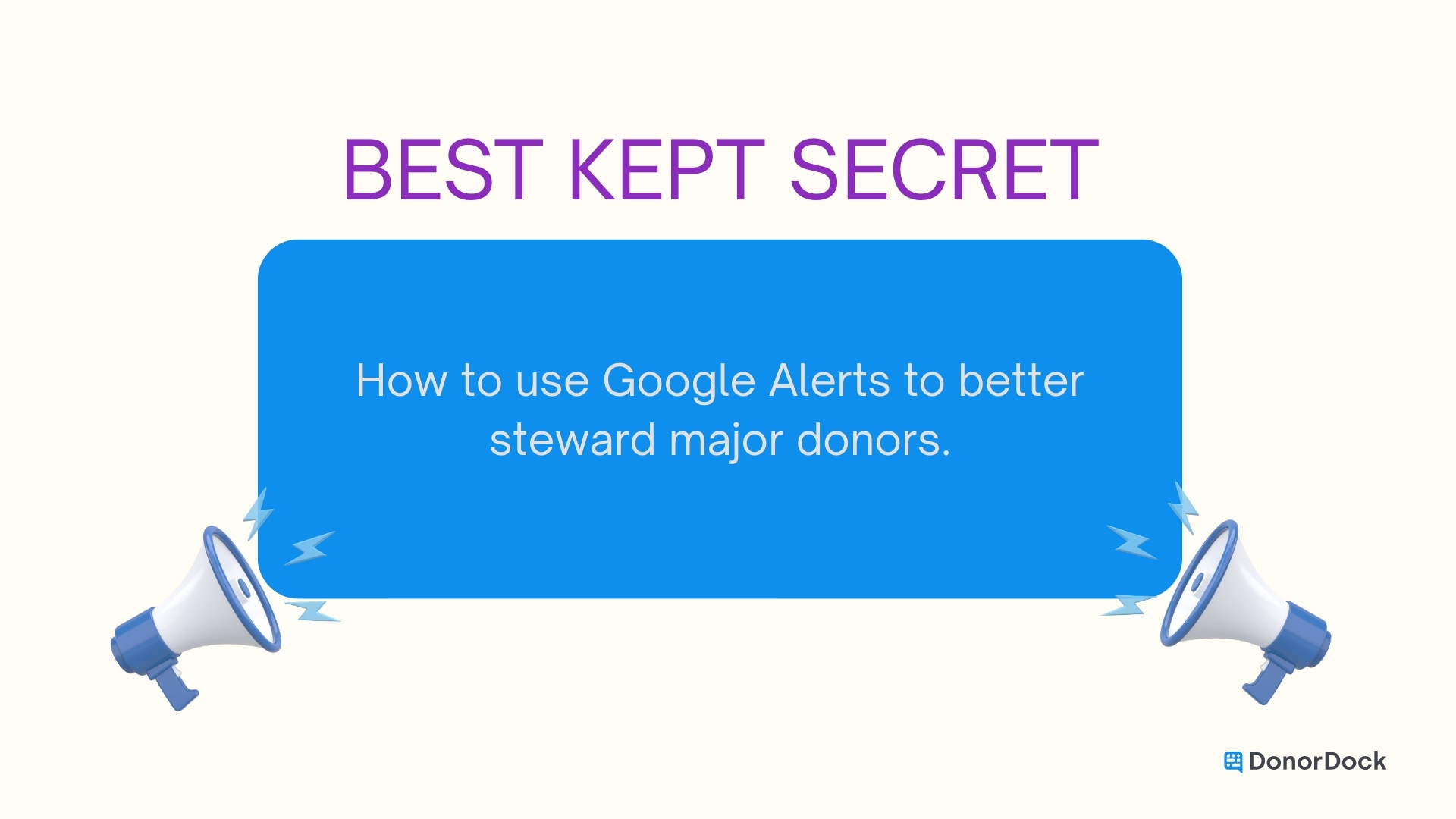Why storytelling matters for your nonprofit
As a nonprofit leader, you understand the importance of connecting with people on a personal level. But despite your best efforts, you may feel like you're talking to a brick wall.
You've tried everything from social media campaigns to flashy fundraising events. It's exhausting to keep coming up with new strategies that have uncertain results.
Then, you realize the missing piece of the puzzle: storytelling. You craft a narrative that highlights the struggles of those you're serving, using powerful imagery and personal anecdotes to bring their stories to life. You share these stories and suddenly, something clicks.
Could you craft a narrative that compels people to help? Could you grow your community to be more than just donors? To be invested wholeheartedly?! What if fundraising could be life-giving? A way to build relationships and make a lasting impact?
With storytelling at the heart of your nonprofit’s fundraising work, you can take your nonprofit to the next level of donor relationships! Let’s break down how you can start telling more compelling stories today!
Storytelling basics

Donating to a nonprofit is a highly emotional - not logical- decision. Stats and data may hit your donors’ minds, but it’s the stories you tell that connect with donors’ hearts.
Storytelling is how you communicate the who, what, why, and how of your nonprofit. A compelling story brings others in and gets them excited about what you’re doing. Our brains are wired to connect us through stories, draw us to one another, and help us find our place in the world. We all deeply invest in our own stories and how they intersect with the stories of others.
As people, we want to be a hero in the story of our life. In general, people want to do good and have a positive impact on the world.
Storytelling also has the benefit of versatility. When you tell a story, you aren’t limited to one platform. As Rachel Cardwell from Friends of the Children - Central Oregon shared on Beyond the Donation, “A story can be shared on any platform: in person, in an email newsletter, on a link, on your website, in your stories, on Facebook—all of these places.” With versatility, you are able to reuse your stories and messaging. This can help alleviate the need to constantly come up with new ways to connect with your donors.
“A story can be shared on any platform: in person, in an email newsletter, on a link, on your website, in your stories, on Facebook—all of these places.”
-Rachel Cardwell, Friends of the Children - Central Oregon
Nonprofit Storytelling: where to start
The first step to storytelling is to define the problem, solution, and call to action you hope your donors will take. What stands in the way of the constituents your nonprofit serves? Then, it’s time to consider how your nonprofit solves that problem. What services do you provide that uniquely meet the needs of the underserved in your sphere? Now that you’ve shared your story, what specific action do you hope people will take? By engaging your nonprofit in storytelling, you connect people to the larger narrative of your community.
Who is your hero?

Lucky for you, you’ve already defined your hero - the person your donor roots for and cheers on. It’s important that donors feel connected to your hero and have empathy for them without othering them. The hero of your nonprofit’s story is the community you serve. We often want to make ourselves or our donors the hero. It feels good to be central to the narrative; however, storytelling is more than making your nonprofit look good. When we tell stories, we need to be aware of how we frame the people or groups we are serving. We aren’t the heroes rescuing a damsel in distress. As partners, we help underserved populations become the heroes in their own stories.
It’s helpful to narrow in on the story of an individual when it is appropriate. People connect with stories that pull on their heartstrings and are motivated by those individual stories. When you share about your nonprofit, you will likely have different stories of individuals that are being served. It’s important when your nonprofit engages in storytelling to center each individual’s story in a way that shows their intrinsic value and worth.
“Are your creative reads written in asset framed narratives that really characterize your constituents and celebrates them for their ambitions and their aspirations? Or is it more denigrative? ...I came from the hood of East Oakland. I was born and raised there. And I don’t think that I was a poor kid. I don’t think I was a vulnerable kid or an at risk kid, and I don’t like to be described as such. And I never write about children and youth that way. I talk about the systems that are contributing to the poverty they live in. There’s a difference.”
- Kia Croom of Kia Croom Fundraising & Philanthropy, Inc
An important note on your hero
Because storytelling narratives that connect with your nonprofit’s donor base tell an individual’s story, you’ll likely have multiple heroes. While you’ll share different stories, their “problem” and solution will be the same - even if it looks a little different for each story.
So, who is the villain of your hero?
Good stories have both a hero and a villain. In your nonprofit’s story, the villain often isn’t a person. The villain is the problem you defined- the systems at work against your hero. It’s the lack of access to resources, the hardships they face, or the ways the community is failing to meet their needs.
Nonprofit storytelling that centers on the community being served as the hero and forces outside of themselves as the villain, is a compelling story that still honors the dignity of the people being served. Your nonprofit’s storytelling moves away from the us vs. them mindset - a story of “them” as a victim and “us” as savior. In the nonprofit world, we are partners with those we are serving.
Just like you don’t want donors who feel like they are coming in to rescue your nonprofit. We want partners who come alongside us, who are excited about our mission and excited to serve and support.
“Stories allow the donor to feel like they are a part of the work, to know the impact that their investment is having”
- Rachel Cardwell
What is the solution to your hero’s problems?

While you aren’t framing yourself as the hero, you do get to frame yourself as the solution. How are you helping the hero battle their villain? The climax of your storytelling is how the hero wins their battle with your nonprofit’s help. Take the time to showcase the good that your nonprofit is doing in the community. Celebrate your impact.
End with a Call to Action
End your story with an invitation to be a part of the solution. How do you want your donors to engage with your nonprofit and those you serve? What action can they take right now?
- Perhaps you want them to start following your newsletter.
- Or you might want them to attend an event.
- Maybe you are hoping for volunteers.
While you may want every communication to involve an ask for donations, it’s important that you limit these asks. Let your donors be partners with your mission, not just piggybanks.
Nonprofit storytelling conclusion
Storytelling is what connects people to your nonprofit’s mission. A good story evokes emotion. When it comes to giving to a nonprofit, donors are drawn by emotion, not logic or statistics.
When your hero is the group you serve, you honor their dignity and grow your communities empathy. Their adversary is the systems holding them back, and your nonprofit is the solution to your hero's problems. Now that your donor base is excited, you can invite them to partner with a Call to Action.
While you may be feeling nervous about your ability to jump into storytelling for your nonprofit, we know that you’ve got this!
Because it doesn’t have to be perfect to grow deeper relationships with your community.
It just has to be your nonprofit’s story.












